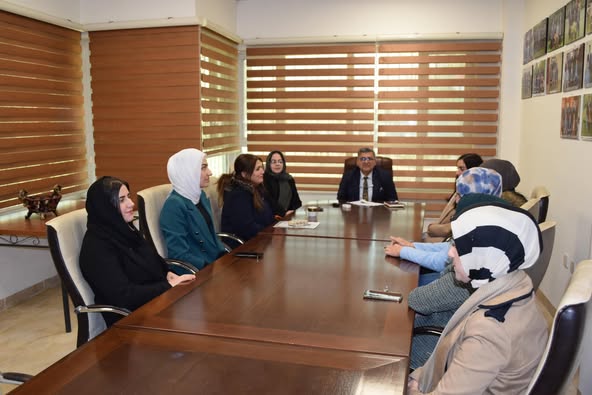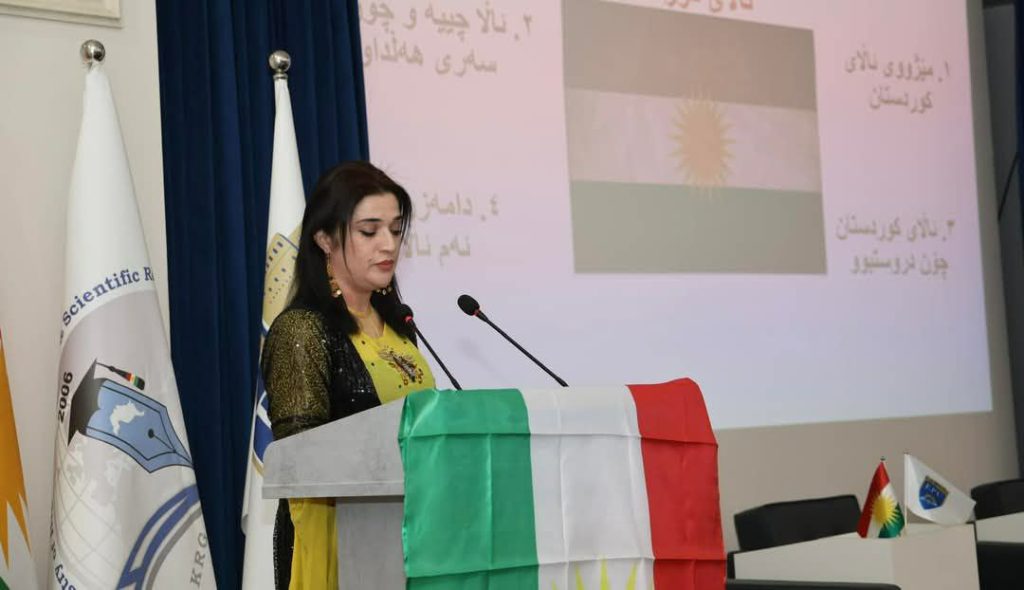A team of Erbil Polytechnic University/Mergasor Technical Institute students, led by Dr. Talib Omer, took second place at the Global Solutions Sustainability Challenge sponsored Virtual Business Expo on December 18,2024. The Virtual Business Expo is an online competition designed to help solve global challenges.
Mergasor Technical Institute takes pride in its achievements, ranking second globally under the facilitation of Dr. Talib Omer for EPU/Mergasor Technical Institute students. Each student from Iraq, Kurdistan and Jordan universities is paired with U.S. college students. Erbil Polytechnic University has established a partnership with Goldey-Beacom College, located in Pike Creek Valley, a suburb of Wilmington, Delaware, USA.
“Team 7’s victory is a testament to the power of teamwork and the importance of bringing diverse perspectives together to tackle global challenges. This binational team proved that by uniting talents across borders, we can create innovative solutions that address critical sustainability issues”. said Dr. Talib. “
Through these eight-week programs, college students come together in cross-cultural teams to improve global citizenship, strengthen skills in problem solving and foster connections while collaborating online and enhancing job skills. Global Solutions defines the challenge as an event which forms “gender-balanced teams to pair up with their binational partner”.
Each team is guided by the provided curriculum to create a sustainable solution to their selected sustainability problem, inspired by the UN Sustainable Development Goals. 11Teams with more than 240 students from different national backgrounds work together to research, brainstorm, design, test and pitch their innovative solution. The top five teams present their pitch live at the culminating event, the Virtual Business Expo, where the top three finalists are selected by a panel of judges to receive a small grant to further develop their concepts.
The students collaborated on an initiative they named “Art Without Borders,” an online portal to bridge cultural gaps and foster international art appreciation. AWB transforms accessibility to art and culture through innovative 3D printing solutions, bringing culturally enriching art and artifacts to under-resourced communities worldwide. By creating high-quality, locally produced replicas of international cultural pieces, AWB make global culture accessible to all.
Through AWB, students in the fall 2024 Cohort XI have given purpose by: Bridging Cultures,Building Futures One 3D Print at a Time. Using cutting-edge 3D printing technology, students bring culturally enriching art and artifacts to under-resourced communities worldwide. By creating high-quality, locally produced replicas of international cultural pieces, we make global culture accessible to all.
Global Solutions Sustainability Challenge is a virtual exchange initiative that supports workforce development in the U.S., Iraq and Jordan through two programs: Global Solutions Sustainability Challenge & Global Solutions Conversations. Global Solutions is implemented by IREX and is supported by the J. Christopher Stevens Virtual Exchange Initiative (JCSVEI).
JCSVEI is a U.S. Department of State’s Bureau of Educational and Cultural Affairs program administered by the Aspen Institute. Global Solutions is implemented by IREX and is supported by the J. Christopher Stevens Virtual Exchange Initiative (JCSVEI). JCSVEI is a U.S. Department of State’s Bureau of Educational and Cultural Affairs program administered by the Aspen Institute.






























